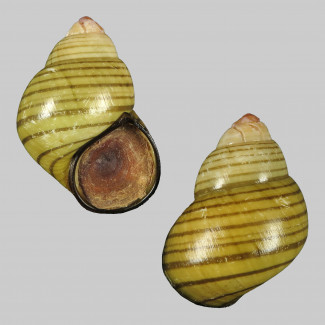
Johns Hopkins UniversityEst. 1876
America’s First Research University
Freshwater Mollusks of the World – A Distribution Atlas

Mollusks, which include mussels, clams, octopus, squid, chitons, snails, slugs, and a few less familiar groups, are the second most diverse animal phylum (arthropods are number one, which includes the hyper-diverse class of insects). Estimates of the total number of living species range from 50,000 to 200,000 with the most likely numbers being somewhere closer, or even over, 200,000 described and undescribed species. Mollusks evolved in a marine environment over 500 million years ago and two groups – the bivalves and gastropods – have representatives who at various times in the past have invaded (and for some) radiated in land and freshwater ecosystems. There are over 5,000 species of freshwater mollusks in 34 gastropod families and 9 primary bivalve families.
In the past, if someone wanted to learn about a particular freshwater family of mollusk, you had to search the primary literature in a variety of books or journals on a wide range of topics to get an appreciation for what studies had been done and what possibly needed to be done. After years of studying mollusks, we agreed that a single, definitive source was needed for professionals, students, and amateurs who wished to learn more about freshwater mollusk families and where they were distributed. We based our book, Freshwater Mollusks of the World: A Distribution Atlas, on a similar volume, Freshwater Fish Distribution by Tim Berra. In addition to co-authoring chapters, we asked 29 other experts from around the world to synthesize what was known in terms of diversity, evolutionary relationships, conservation, and, if relevant, their role as disease vectors and invasive species biology for all freshwater families covered in the volume.

Another facet we asked contributing authors to provide was estimates on the number of species for each family. This was included as a table in the Introduction and Overview showing the classification of the covered families down to the genus level. The gastropod classifications were based on a study by Philippe Bouchet and his colleagues, which was published in the scientific periodical Malacologia in 2017; and the bivalve part was based upon the Mussel Project, an on-line database of freshwater bivalve names by KSC and Dan Graf at the University of Wisconsin, Stevens Point, so it is the latest classification scheme for both groups. In addition to write-ups on each family covering the topics mentioned above, a representative color figure of a species and map is provided showing the distribution of each family for each chapter. For those interested in biogeography and knowing where to find your favorite group of snails and bivalves, this is a real plus.
What we found surprising in compiling Freshwater Mollusks of the World was the lack of basic information we have about many of the families. It is our hope that this book will stimulate amateurs and professionals alike to identify and help fill in some of the gaps in our knowledge.
Charles Lydeard is a professor and the chair of biology at Morehead State University. He is the editor-in-chief of Malacologia and a coeditor of Molecular Systematics and Phylogeography of Mollusks. Kevin S. Cummings is a senior research scientist and the curator of mollusks at the Illinois Natural History Survey, Prairie Research Institute, the University of Illinois at Urbana-Champaign. He is a coauthor of Field Guide to Freshwater Mussels of the Midwest. Together, they are the editors of Freshwater Mollusks of the World: A Distribution Atlas.


